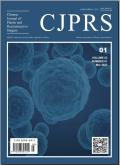Trends and dynamics in facelift surgery research: A bibliometric analysis of the top 50 most cited papers
Chinese Journal of Plastic and Reconstructive Surgery
Pub Date : 2025-03-01
DOI:10.1016/j.cjprs.2024.12.004
引用次数: 0
Abstract
Background
Facelift procedures represent a critical area of aesthetic and reconstructive surgery that addresses the physical and psychological impacts of facial aging. Advancements in techniques and technologies over time have transformed the field, making it essential to assess the evolution of research trends. This study performed a bibliometric analysis of facelift research by examining the top 50 most cited publications to evaluate their contributions, thematic evolution, and collaborative networks.
Methods
The Scopus database was used to identify relevant publications. A total of 50 documents were selected, comprising 47 articles and 3 reviews published across 16 academic sources. The inclusion criteria focused on publications with substantial relevance to facelift research; this ensured comprehensive coverage of the topic. Key performance indicators (for the authors) such as the number of papers, total citations, h-index, g-index, m-index, HG composite, and Q2 index were calculated. Citation analysis and collaborative network mapping were conducted to identify the leading contributors, including authors, universities, countries, and sources.
Results
The findings indicated an annual growth rate of 1.34%, with an average document age of 29.4 years and an average citation count per document of 134.9. The analysis identified the top authors and their collaborative networks, along with key contributions from various universities, countries, and sources. The thematic evolution of facelift research was examined across these 50 papers; this revealed important trends and shifts within the field.
Conclusion
This bibliometric analysis offers valuable insights into the development and influence of facelift research over a 52-year span. It highlights significant contributors and outlines thematic shifts, providing directions for future research and collaboration in this field.
整容手术研究的趋势和动态:前50篇被引论文的文献计量学分析
整容手术是美容和重建手术的一个重要领域,它解决了面部衰老对身体和心理的影响。随着时间的推移,技术和技术的进步已经改变了这个领域,因此评估研究趋势的演变至关重要。本研究对整容研究进行了文献计量学分析,通过检查前50名被引用最多的出版物来评估他们的贡献、主题演变和合作网络。方法采用Scopus数据库对相关文献进行检索。共有50篇文献入选,包括47篇文章和3篇综述,发表于16个学术来源。纳入标准侧重于与整容研究有实质性相关性的出版物;这确保了对该专题的全面报道。计算论文数、总被引次数、h指数、g指数、m指数、HG综合指数、Q2指数等(作者的)关键绩效指标。通过引文分析和协作网络映射来确定主要贡献者,包括作者、大学、国家和来源。结果年增长率为1.34%,平均文献年龄为29.4年,平均被引次数为134.9次。该分析确定了顶级作者及其合作网络,以及来自不同大学、国家和来源的主要贡献。在这50篇论文中,研究了整容研究的主题演变;这揭示了该领域的重要趋势和变化。结论:文献计量学分析为过去52年间整容研究的发展和影响提供了有价值的见解。它突出了重要的贡献者并概述了主题转变,为该领域的未来研究和合作提供了方向。
本文章由计算机程序翻译,如有差异,请以英文原文为准。
求助全文
约1分钟内获得全文
求助全文
来源期刊

Chinese Journal of Plastic and Reconstructive Surgery
Surgery, Otorhinolaryngology and Facial Plastic Surgery, Pathology and Medical Technology, Transplantation
CiteScore
0.40
自引率
0.00%
发文量
115
审稿时长
55 days
 求助内容:
求助内容: 应助结果提醒方式:
应助结果提醒方式:


